US-Sport
NBA: Adams’ role with OKC: I clear the way
Steven Adams’ lavish treaty was once ridiculed, but the New Zealander is more than worth his money. At the Oklahoma City Thunder, the center has now clearly established itself as the third part of the Big Three.
It’s fair to say that the NBA is full of physical peculiarities, maybe even freaks. You have the athletic monsters, you have giants and of course unicorns. And you have Steven Adams – a guy who is so strong that in a duel with himself, the NBA centers sometimes seem like sad linnabies.
When Adams goes to the offensive rebound, opponents bounce off him, he can hardly be dissuaded from his path with fair means. He doesn’t let fouls deter him – which frustrates some opponents even more. This is one of the reasons why he has already been hit several times in the “Kiwis”, although the most famous case (Draymond Green) was not the only one. Adams also takes up this with his own stoic calm and, if he is not injured, goes to the next rebound or jump ball with the same uncompromising attitude.
Adams has long been one of the NBA’s most unusual players – but now also one of their best – because of his playing style, his origins and his looks (he looks like a pirate that almost every pirate would be afraid of). For the Thunder, it is now clear in most games that the New Zealander – and not Carmelo Anthony – is the third part of the Big Three.
It’s no secret that there’s a lot going on in OKC about Russell Westbrook, and Paul George also wants to be provided with litters and touches. Over the last few years Adams has managed to adapt his skillset almost ideally to these circumstances. This season he has almost perfected it.
He doesn’t need much of the ball to be effective. Adams is probably the NBA’s best garbage collector – when on the court, he collects 16.7 percent of the available offensive rebounds, the best value in the league. Funnily enough, he even gets more offensive rebounds than defensive rebounds (5.0:3.9). If Adams wouldn’t be content defensively with just blocking out uncompromisingly so that Westbrook could collect the rebounds, he could polish up his naked numbers, but they’re not very important to him anyway.
“I just always want to finish the posession. Because I don’t want to play defense anymore. It’s so f*cking difficult, mate,” Adams explained last season in his own way: “As long as we get the ball, everything is fine. I know that many people in the USA are interested in statistics, but that is not the case with me. I just don’t want to play defense anymore:”
On the other hand, of course, he also benefits immensely from Westbrook. There are only a few 1-5 pick’n’roll combinations in the NBA that work so well: OKC generates 1.23 points per possession from plays with Adams as dispenser, which only Clint Capela and Rudy Gobert exceed in frequency. Adams also provides the second most Screen Assists (4,8) of the league after Gobert.
Altogether Adams produces 13.9 points in front this season with an effective field goal percentage of 63.4 percent – both are by far career highs. But the 24-year-old (really!) is no longer just the finisher who only sinks putbacks or alley-op games – although that still accounts for a large part of his points, of course.
He has also built up a small arsenal of floaters, hook throws and push shots over the last few years, which he continues to expand a little bit year after year. It doesn’t happen too often with the Thunder, but if neither Russ, PG-13 or Melo have an idea, Adams in the post is also a good option in a certain dose.
Adams posts 1.3 times per game and scores 1.08 points per possession, which puts him in 90th place. percentile league-wide (i.e. in the upper 10 percent). For comparison: Anthony posts 2.6 times per game and makes 0.83 points (42. percentile). And no, that doesn’t necessarily make Adams a more experienced or better offensive player than Melo. It just means he’s more effective.
Adams also works so well at OKC because he does nothing he cannot or has no room for in the system. He has recorded 1 (!) isolation play in 65 races this season, which sums up his role with the Thunder in the offense relatively well.
Adams is first and foremost an executor. Almost 70 percent of his field goals are preceded by an assist. 201 (!) of 397 field goals were prepared by Westbrook. The chemistry with the MVP has improved year after year, especially as Adams now masters even passes that he would have thrown into the audience regularly in his first seasons.
“Steven has become much better at understanding the game and looking for his spots, easy to understand when he has to be aggressive himself,” Russ praised in December: “He has worked incredibly hard on his game and body, and you can see the results. He knows exactly how to play.”
It’s hard to disagree with Westbrook. Adams isn’t a classic superstar – but he’s one of the best role-players the NBA has to offer, so his lavish $100 million four-year contract he signed in 2017 is no coincidence. Especially since it is still getting better and of course not only offensively fits perfectly into the OKC scheme. Adams is also an indispensable defensive player.
The Thunder have one of the better defences of the NBA this season (def PG: 107, rank 8). This has to do not least with the grandiose wing defender pliers George and Andre Roberson before he got injured, but also with Adams. Without being the classic shotblocker (1.1 per game), for which it also lacks some bounce and explosiveness, it offers good protection and changes the behaviour of opponent offensive players.
My mentality is that I always work as hard as I can,” Adams recently explained, “It’s as simple as that. Nobody likes to be approached hard. Me neither. It comes to a doubt. “So it makes my job easier in the long run if I take an aggressive approach right from the start.”
In this context Adams explicitly talked about his defensive box-outs, but he could also have described his complete playing style. In any case, it works: Adams’ opponents hit their throws with him 3 percent worse than the expected odds, putting him ahead of Rudy Gobert, for example (7th place overall among big men).
What is striking is that it is not a center that lingers around its own zone – Adams also defends small players at the perimeter after switches. Under Big Men, only Anthony Davis, Kristaps Porzingis, Taj Gibson and Draymond Green contested more threesomes than Adams (3.9 per game). It doesn’t always look elegant, but the colossus is agile enough to at least make the litter more difficult.
All in all, Adams has become the perfect complementary player in Oklahoma City. It is for the most part his presence that has led Anthony to permanently accept the role of Power Forward – and which also leads to OKC being considered a potentially very unpleasant playoff opponent despite his thin squad.
Not many teams know such a crusher in their ranks, who also knows exactly how to use his power intelligently. Don’t get it wrong: The most important players in Oklahoma City are still Westbrook and George. But Melo no longer appears on rank 3 of the opposing scouting bows, but the one-man demolition company from New Zealand.
Not to mention that it is Adams who distributes the souvenirs in the form of bruises. Always within the bounds of legality, of course.


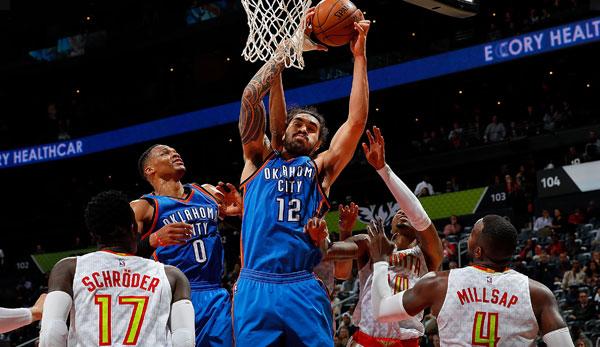




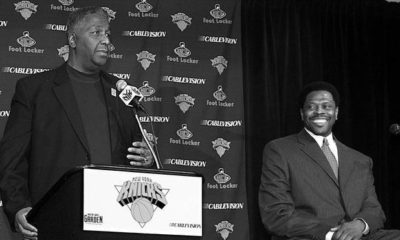
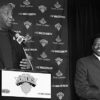
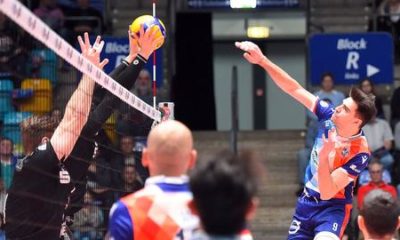
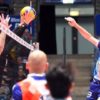
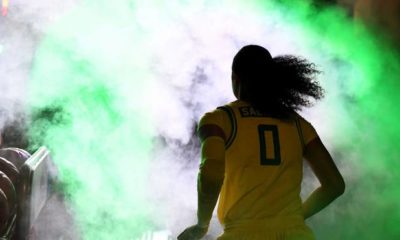
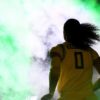





You must be logged in to post a comment Login